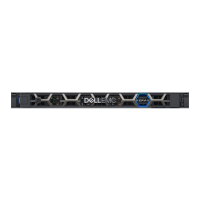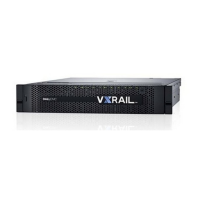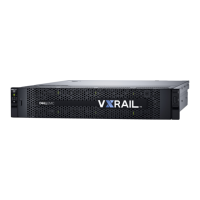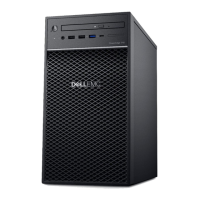41 | Network Planning Guide
© 2018 Dell Inc. or its subsidiaries
Appendix A: NSX Support on VxRail
VxRail supports VMware NSX software-defined networking (SDN) through vCenter Server. vCenter Server offers a fully integrated
option for SDN and network-layer abstraction with NSX. The NSX network-virtualization platform delivers for networking what
VMware delivers for compute and storage. In much the same way that server virtualization allows operators to programmatically
create, snapshot, delete, and restore software-based virtual machines (VMs) on demand, NSX enables virtual networks to be
created, saved, deleted, and restored on demand without requiring reconfiguration of the physical network. The result
fundamentally transforms the datacenter network-operational model, reduces network-provisioning time from days or weeks to
minutes, and dramatically simplifies network operations. NSX is a non-disruptive solution that is deployed on any IP network,
including existing datacenter network designs or next-generation fabric architectures from any networking vendor.
With network virtualization, the functional equivalent of a “network hypervisor” reproduces the complete set of Layer 2 to Layer 7
networking services (e.g., switching, routing, access control, firewalling, QoS, and load balancing) in software. Just as VMs are
independent of the underlying x86 hardware platform and allow IT to treat physical hosts as a pool of compute capacity, virtual
networks are independent of the underlying IP network hardware and allow IT to treat the physical network as a pool of transport
capacity that can be consumed and repurposed on demand.
NSX coordinates ESXi’s vSwitches and the network services pushed to them for connected VMs to effectively deliver a platform—or
“network hypervisor”—for the creation of virtual networks. Similar to the way that a virtual machine is a software container that
presents logical compute services to an application, a virtual network is a software container that presents logical network
services—logical switches, logical routers, logical firewalls, logical load balancers, logical VPNs and more—to connected workloads.
These network and security services are delivered in software and require only IP packet forwarding from the underlying physical
network.
To connected workloads, a virtual network looks and operates like a traditional physical network. Workloads “see” the same Layer
2, Layer 3, and Layers 4-7 network services that they would in a traditional physical configuration. It’s just that these network
services are now logical instances of distributed software modules running in the hypervisor on the local host and applied at the
vSwitch virtual interface.
The following NSX components are illustrated in Figure 11:
• NSX vSwitch operates in ESXi server hypervisors to form a software abstraction layer between servers and the physical
network.
• NSX Controller is an advanced, distributed state management system that controls virtual networks and overlays transport
tunnels. It is the central control point for all logical switches within a network and maintains information of all virtual
machines, hosts, logical switches, and VXLANs.
• NSX Edge provides network-edge security and gateway services to isolate a virtualized network. You can install NSX Edge
either as a logical (distributed) router or as a services gateway.
• NSX Manager is the centralized network management component of NSX, installed as a virtual appliance on an ESXi host.

